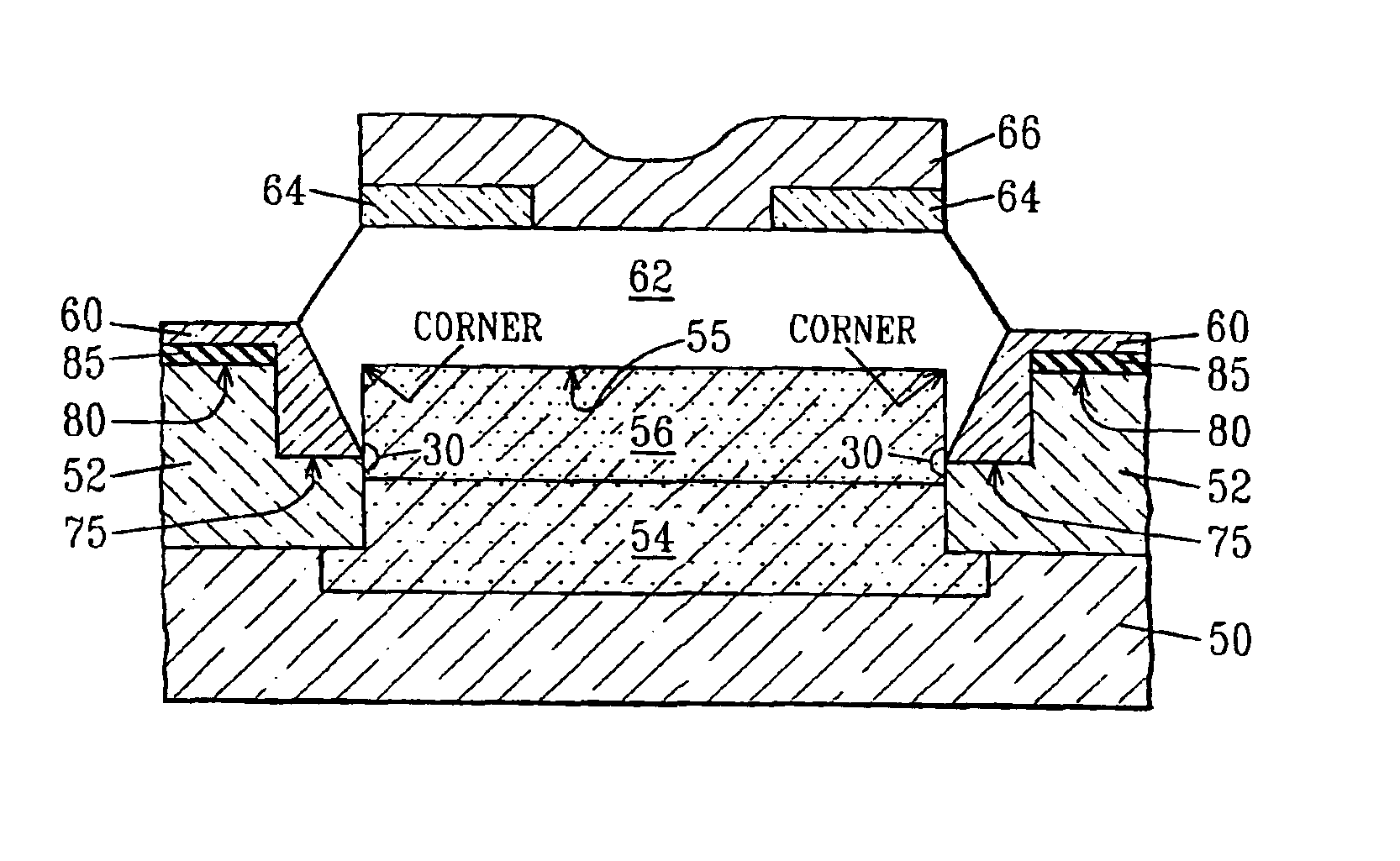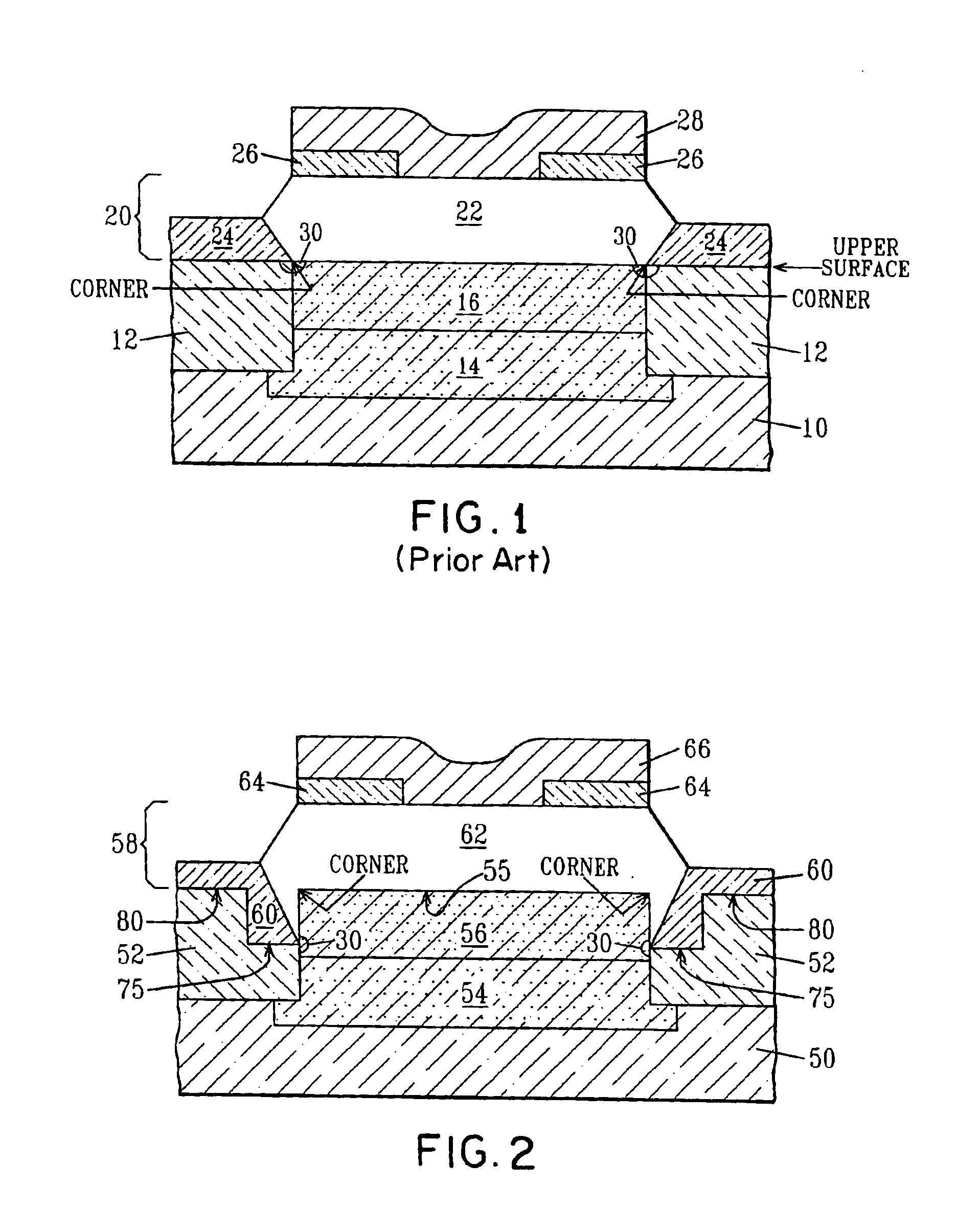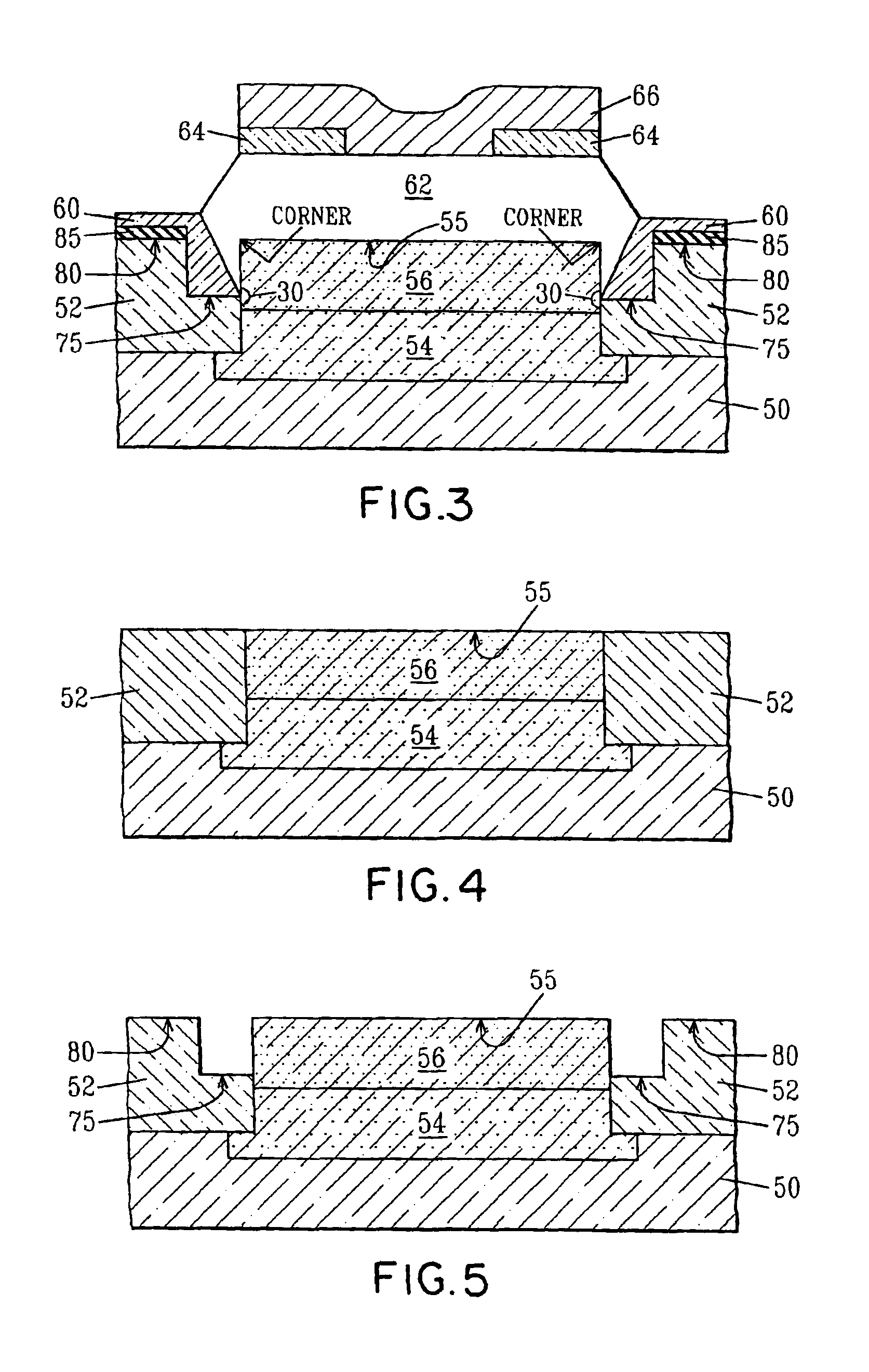STI pull-down to control SiGe facet growth
a technology of sige facet and pull-down, which is applied in the direction of transistors, semiconductor devices, electrical equipment, etc., can solve the problems of increasing parasitic current leakage, and achieve the effect of reducing dislocations
- Summary
- Abstract
- Description
- Claims
- Application Information
AI Technical Summary
Benefits of technology
Problems solved by technology
Method used
Image
Examples
Embodiment Construction
[0028]The present invention which provides a method for improving the SiGe bipolar yield of a SiGe bipolar transistor will now be described in more detail by referring to the drawings the accompany the present invention. It is noted that in the accompanying drawings, like and corresponding elements are referred to by like reference numerals. Also, for simplicity, only one bipolar device region is shown in the drawings. Other bipolar device regions as well as digital logic circuitry may be formed adjacent to the bipolar device region depicted in the drawings.
[0029]Reference is first made to FIG. 2 which represents a cross-sectional view of the inventive SiGe heterojunction bipolar transistor. Specifically, the SiGe heterojunction bipolar transistor comprises semiconductor substrate 50 of a first conductivity type (N or P) having sub-collector region 54 and collector region 56 formed therein. The substrate is further characterized as having an upper surface 55. Isolation regions 52 wh...
PUM
 Login to View More
Login to View More Abstract
Description
Claims
Application Information
 Login to View More
Login to View More - R&D
- Intellectual Property
- Life Sciences
- Materials
- Tech Scout
- Unparalleled Data Quality
- Higher Quality Content
- 60% Fewer Hallucinations
Browse by: Latest US Patents, China's latest patents, Technical Efficacy Thesaurus, Application Domain, Technology Topic, Popular Technical Reports.
© 2025 PatSnap. All rights reserved.Legal|Privacy policy|Modern Slavery Act Transparency Statement|Sitemap|About US| Contact US: help@patsnap.com



